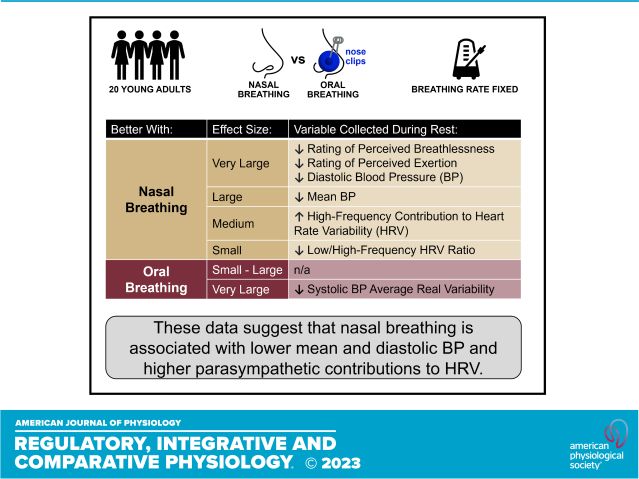Cardiovascular
Better Blood Pressure Is at the Tip of Your Nose
Sometimes it is hard to just pause, breathe, and calm down. We use this type of phrasing figuratively all the time but there are many real indicators of the benefits of taking a breath, especially when that breath is through your nose. Lots of evidence also supports the nose-to-toes effects of nasal breathing.
Dropping from the top
Joseph Watso and colleagues at Florida State University wanted to know a bit more about how nasal breathing affects the cardiovascular system. These researchers point out a number of effects and benefits of nasal breathing including mechanical things like how “inhaled air is humidified, warmed, and filtered” with nasal breathing, but also the potential influences on airway diameter, diaphragm, and inspiratory muscle activity. Yet, as they point out, despite the knowledge that nasal breathing relaxes the airways, improves breathing efficiency, and reduces metabolic demands, “the effect of nasal breathing on the cardiovascular system is unclear.”
The researchersstudied 20 young adults during sessions of nasal breathing or oral-only breathing while assessing cardiovascular measures like heart rate, systolic and diastolic blood pressure, and heart rate variability. They were especially interested in these variables’ relevance for prognostic assessment of cardiovascular health.
Nasal Dip in Blood Pressure
When it comes to physiology, but especially the cardiovascular system, a major issue is balance in the autonomic nervous system. This is a function of “tone” in the sympathetic and parasympathetic branches. Sympathetic tone is represented by the classic “fight or flight” response and parasympathetic tone is often referred to as “wine, dine, and recline” to indicate the main functions of biased activity in each. The new data from Watso and colleagues strongly suggest that nasal breathing especially affects parasympathetic tone as seen in lower mean and diastolic blood pressure and increased heart rate variability.
Everybody Was Kung Fu Breathing
Breathing is a central part of many holistic and mindful practices from seated meditation to Yoga postures and motion in martial arts. Almost all of these practices put a critical emphasis on breath and especially nasal inhalation. In my own experiences with martial arts, I’ve noticed that many Okinawan and Japanese traditions emphasize nasal inhalation and oral exhalation while many Chinese traditions suggest nasal inhalation and exhalation. The common aspect, though, is in through the nose. Combined with other work showing the effect of nasal breathing on brain rhythms, it’s increasingly clear that it’s important to pay attention to not just the air you breathe but how you breathe it. So when you take that calming breath, focus on your nose and then on relaxing all the way down to your toes.
(c) E. Paul Zehr (2023)

